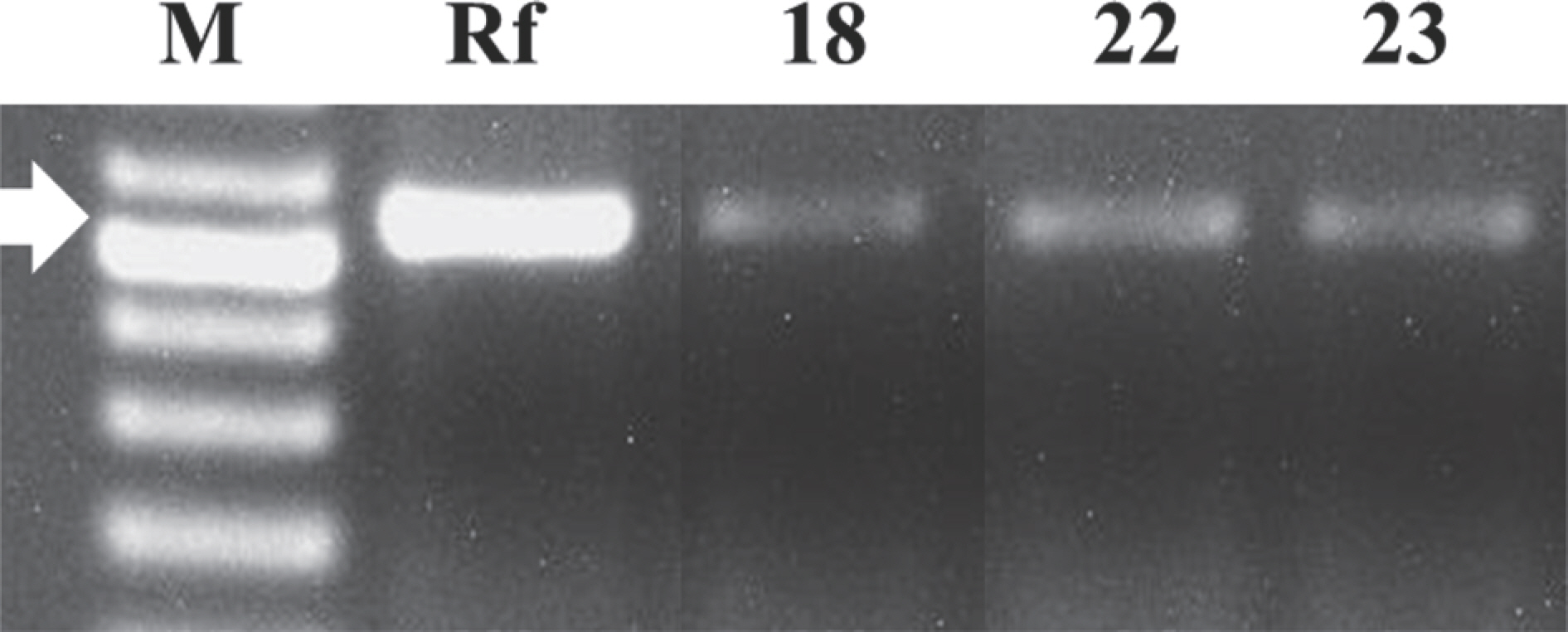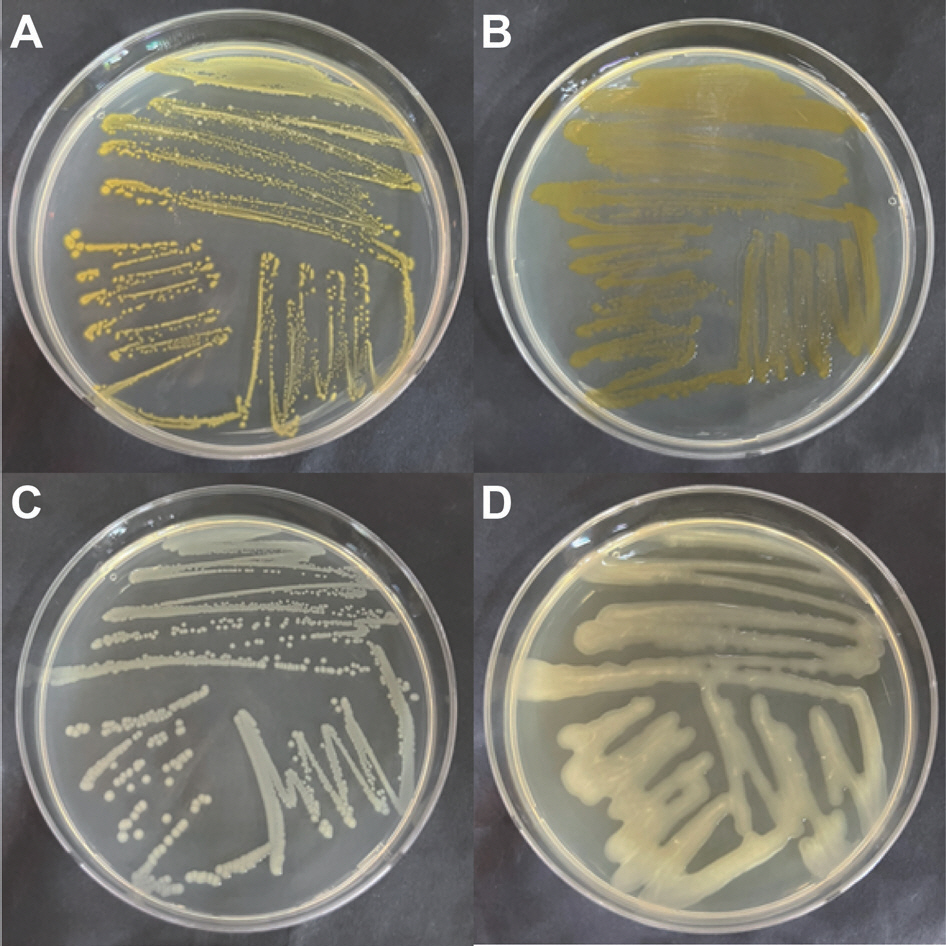Cabecinhas, A. S. S. 2014. Identification and analysis of novel virulence-defective Rhodococcus fascians mutants. Ph.D. thesis. Ghent University, Schoonmeersen, Belgium. 75.
Choi, S.-Y., Lee, J.-H. and Lee, A.-K. 2018. Comparison of pretreatments and shipping solutions for lilium OT hybrid ‘Zambesi’ export.
Hortic. Sci. Technol. 36: 876-884. (In Korean)

Cornelis, K. 2000. Behaviour of the phytopathogenic bacterium Rhodococcus fascians on plants. Ph.D. thesis. Libre Bruxelles University, Brussels, Belgium. 43.
Cornelis, K., Ritsema, T., Nijsse, J., Holsters, M., Goethals, K. and Jaziri, M. 2001. The plant pathogen
Rhodococcus fascians colonizes the exterior and interior of the aerial parts of plants.
Mol. Plant-Microbe Interact. 14: 599-608.


Crespi, M., Messens, E., Caplan, A. B., van Montagu, M. and Desomer, J. 1992. Fasciation induction by the phytopathogen
Rhodococcus fascians depends upon a linear plasmid encoding a cytokinin synthase gene.
EMBO J. 11: 795-804.




Crespi, M., Vereecke, D., Temmerman, W., Van Montagu, M. and Desomer, J. 1994. The
fas operon of
Rhodococcus fascians encodes new genes required for efficient fasciation of host plants.
J. Bacteriol. 176: 2492-2501.




Dhandapani, P., Song, J., Novak, O. and Jameson, P. E. 2018. Both epiphytic and endophytic strains of
Rhodococcus fascians influence transporter gene expression and cytokinins in infected
Pisum sativum L. seedlings.
Plant Growth Regul. 85: 231-242.


Dhaouadi, S. A. H. M. and Rhouma, A. 2020. The plant pathogen
Rhodococcus fascians. History, disease symptomatology, host range, pathogenesis and plant-pathogen interaction.
Ann. Appl. Biol. 177: 4-15.


Francis, I. M., Stes, E., Zhang, Y., Rangel, D., Audenaert, K. and Vereecke, D. 2016. Mining the genome of
Rhodococcus fascians, a plant growth-promoting bacterium gone astray.
N. Biotechnol. 33: 706-717.


Goethals, K., Vereecke, D., Jaziri, M., Van Montagu, M. and Holsters, M. 2001. Leafy gall formation by
Rhodococcus fascians.
Annu. Rev. Phytopathol. 39: 27-52.


Jang, H. and Kim, S. 2016. Analysis of the economic value of the production of lily bulbs in Korea.
Korean J. Agric. Sci. 43: 481-495. (In Korean)

Kim, S. and Kim, J. 2015. Analysis on the production and consumption of the cut lily bulb in world market.
CNU J. Agric. Sci. 42: 73-79. (In Korean)

Lawson, E. N., Gantotti, B. V. and Starr, M. P. 1982. A 78-megadalton plasmid occurs in avirulent strains as well as virulent strains of. Corynebacterium fascians. Curr. Microbiol. 7: 327-332.
Lim, Y.-J., Kong, H. G., Lee, Y. H., Kim, H. R. and Park, D. H. 2021. First report of
Rhodococcus fascians causing fasciation of lilies (
Lilium longiflorum) in South Korea.
Plant Dis. 105: 1190.

Nikolaeva, E. V., Kang, S., Olson, T. N. and Kim, S. H. 2012. Real-time PCR detection of
Rhodococcus fascians and discovery of new plants associated with
R. fascians in Pennsylvania.
Plant Health Prog. 13: 1.

Nikolaeva, E. V., Park, S.-Y., Kang, S., Olson, T. N. and Kim, S. H. 2009. Ratios of cells with and without virulence genes in
Rhodococcus fascians populations correlate with degrees of symptom development.
Plant Dis. 93: 499-506.


Park, K.-T., Hong, S.-M., Back, C.-G., Kim, S. Y., Lee, S.-Y., Kang, I.-K. et al. 2022. First report of
Pectobacterium brasiliense causing soft rot on graft cactus in Korea.
Res. Plant Dis. 28: 172-178.


Patel, J. B., Wallace, R. J. Jr., Brown-Elliott, B. A., Taylor, T., Imperatrice, C., Leonard, D. G. et al. 2004. Sequence-based identification of aerobic actinomycetes.
J. Clin. Microbiol. 42: 2530-2540.




Pertry, I., Václavíková, K., Gemrotová, M., Spíchal, L., Galuszka, P., Depuydt, S. et al. 2010.
Rhodococcus fascians impacts plant development through the dynamic fas-mediated production of a cytokinin mix.
Mol. Plant-Microbe Interact. 23: 1164-1174.


Putnam, M. L. and Miller, M. L. 2007.
Rhodococcus fascians in Herbaceous Perennials.
Plant Dis. 91: 1064-1076.


Savory, E. A., Fuller, S. L., Weisberg, A. J., Thomas, W. J., Gordon, M. I., Stevens, D. M. et al. 2017. Evolutionary transitions between beneficial and phytopathogenic
Rhodococcus challenge disease management.
eLife 6: e30925.




Serdani, M., Curtis, M., Miller, M. L., Kraus, J. and Putnam, M. L. 2013. Loop-mediated isothermal amplification and polymerase chain reaction methods for specific and rapid detection of
Rhodococcus fascians.
Plant Dis. 97: 517-529.


Song, S. H. and Kim, S. H. 2021. Analysis of export competitiveness and intra industry trade of Korean flower: focusing on roses, chrysanthemums, and lilies.
Korean J. Agric. Manag. Policy 48: 106-132. (In Korean)

Stamler, R. A., Kilcrease, J., Kallsen, C., Fichtner, E. J., Cooke, P., Heerema, R. J. et al. 2015. First report of
Rhodococcus isolates causing pistachio bushy top syndrome on ‘UCB-1’ rootstock in California and Arizona.
Plant Dis. 99: 1468-1476.


Stange, R. R., Jeffares, D., Young, C., Scott, D. B., Eason, J. R. and Jameson, P. E. 1996. PCR amplification of the fas-1 gene for the detection of virulent strains of Rhodococcus fascians. Plant Pathol. 45: 407-417.
Stes, E., Francis, I., Pertry, I., Dolzblasz, A., Depuydt, S. and Vereecke, D. 2013. The leafy gall syndrome induced by
Rhodococcus fascians.
FEMS Microbiol Lett. 342: 187-194.


Stes, E., Vandeputte, O. M., El Jaziri, M., Holsters, M. and Vereecke, D. 2011. A successful bacterial coup d’état: how
Rhodococcus fascians redirects plant development.
Annu. Rev. Phytopathol. 49: 69-86.











 PDF Links
PDF Links PubReader
PubReader ePub Link
ePub Link Full text via DOI
Full text via DOI Download Citation
Download Citation Print
Print






